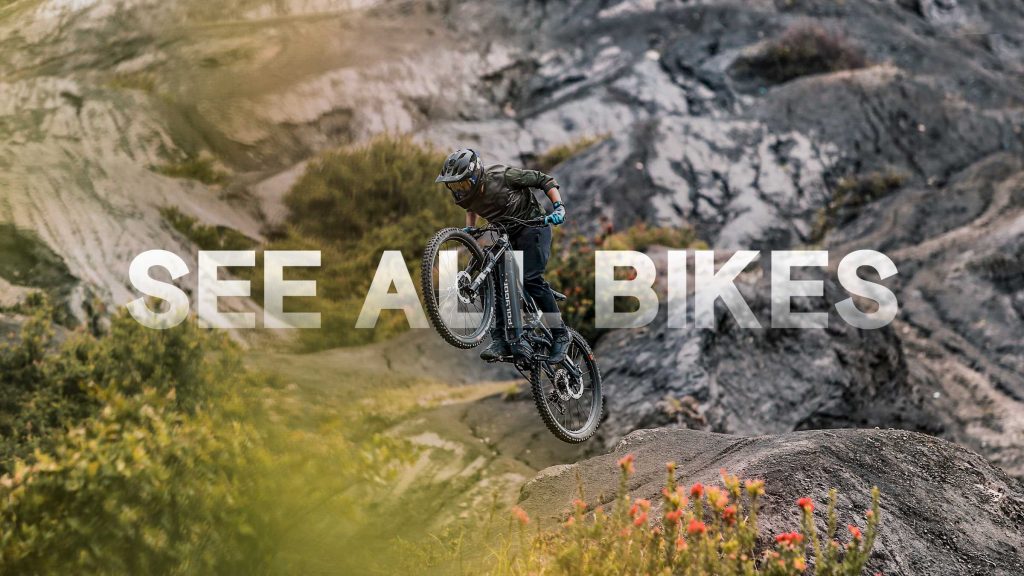In the world of mountain biking, the frame is the core foundation that determines comfort, control, and durability when tackling extreme terrain. Whether you prefer technical trails, rocky climbs, or simply exploring forests, choosing the right mountain bike frame will significantly influence your riding experience.
The frame isn’t just a support for other components; it is the heart of the overall performance of a mountain bike. That’s why understanding frame types, materials, and the right sizing is essential for anyone looking to start this sport optimally.
Read through this article to discover the key elements that make a bike reliable, comfortable, and ready to take on a variety of terrains.
Types of Mountain Bike Frames: Hardtail, Full Suspension, and Rigid
Choosing the right frame type depends on your riding style, comfort level, and the terrain you usually ride.
Hardtail: Lightweight, Responsive, and Versatile
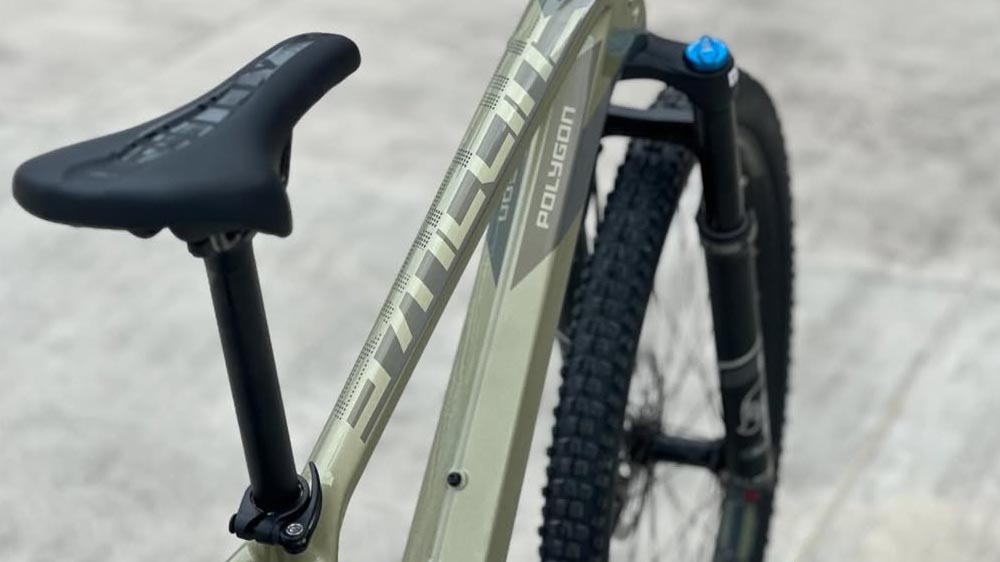
A hardtail mountain bike is one that only has suspension in the front fork, with no suspension in the rear. This design offers an ideal balance between pedaling efficiency and comfort, especially on XC (cross-country) trails and moderate to light terrain. With fewer moving parts compared to a full suspension bike, hardtails tend to be lighter, easier to maintain, and more affordable.
This type is ideal for beginner cyclists or experienced riders looking to maximize efficiency on climbs and fast trails.
Advantages:
- Lighter and more efficient compared to full-suspension bikes
- Perfect for hard-packed trails and XC riding
- More affordable
- Easier to maintain
One example of this frame type is the Polygon Xtrada 5, a lightweight hardtail MTB with an ALX aluminum frame, equipped with a suspension fork and 27.5” or 29” wheels, designed to handle light to medium trail rides. It’s perfect for riders looking to level up from casual recreational bikes to a more serious MTB experience.
Full Suspension: Maximum Control on Extreme Terrain
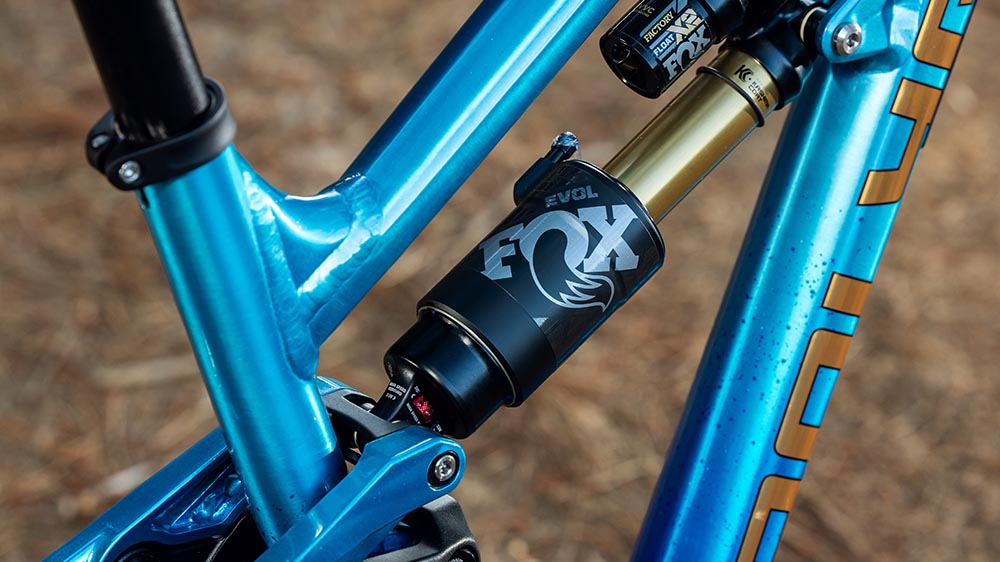
A full suspension mountain bike, or dual suspension bike, is equipped with both front and rear suspension systems. The rear suspension allows the wheels to stay in contact with the ground more effectively, even on rough terrain such as rocks, roots, or steep descents. This provides better control, comfort, and confidence when riding technical trails.
While full suspension bikes are slightly heavier and require more maintenance compared to hardtails, they are the go-to choice for trail riding, enduro, and downhill enthusiasts.
Advantages:
- Better performance on technical and downhill terrain
- Reduces rider fatigue by absorbing vibrations
- Maximizes rear wheel traction
- Increases confidence on challenging routes
An example of this frame type is the Polygon Siskiu T8, a full suspension MTB with 140mm suspension travel and an aggressive geometry designed for enduro and trail riding. The Siskiu T8 is perfect for riders who want to explore extreme trails with full control and high comfort.
Rigid: Minimalistic and Lightweight
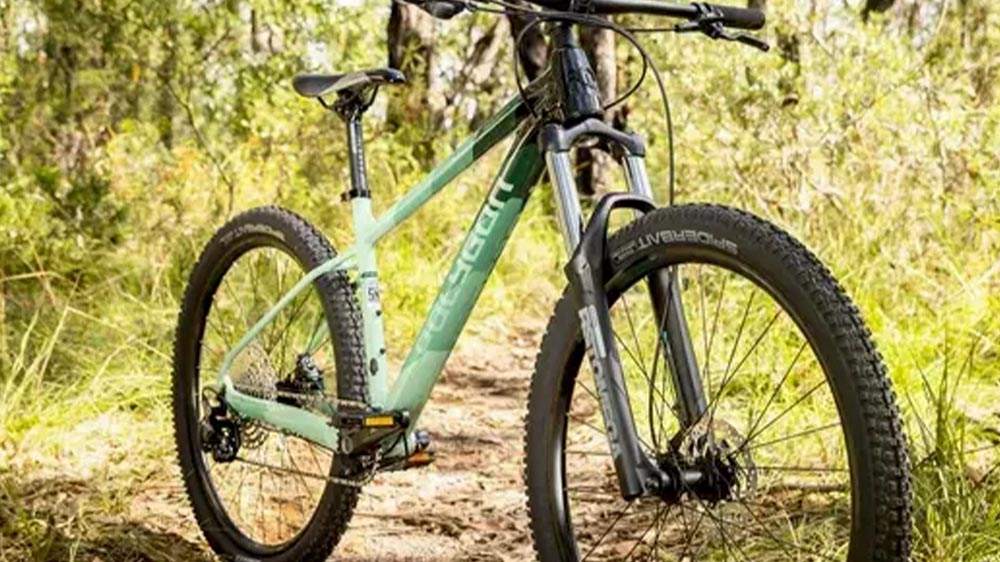
Unlike the previous two types, a rigid frame mountain bike has no suspension, either in the front or rear. This design provides a more direct and responsive riding feel but sacrifices comfort, especially on rocky or bumpy terrain. Although rigid frames are not as popular as hardtails or full suspension bikes for heavy mountain biking terrain, they still have a place among cyclists who prioritize efficiency, simplicity, and lightweight construction.
Rigid frames are mostly used for purposes like bikepacking, urban commuting, or light cross-country trails where suspension isn’t a top priority.
Advantages:
- The lightest frame option
- Minimal maintenance due to the absence of suspension components
- Ideal for flat trails and light terrain
Rigid frames are lighter and deliver more efficient pedaling, especially on mixed terrains like gravel paths, rough asphalt, or light dirt trails. Without complex suspension systems, rigid bikes are easier to maintain and ideal for riders seeking responsive handling and a dependable companion for long-distance rides or light touring.
Mountain Bike Frame Materials: Which One is Right for You?

One of the most important aspects of choosing a mountain bike frame is understanding the materials used. These materials directly affect the bike’s weight, strength, comfort, and price. The three most common frame materials are aluminum, carbon, and steel (baja).
Here’s a breakdown of these materials:
| Material | Advantages | Disadvantages |
| Aluminum | – Lightweight and strong- Relatively affordable- Commonly used by brands like Polygon | – Stiffer compared to carbon- Can feel harsh on rocky terrain |
| Carbon | – Very lightweight- Excellent vibration-damping- Ideal for high-performance bikes | – More expensive- Can crack or break upon impact |
| Steel | – Extremely durable and strong- More comfortable due to flexibility | – Heavier compared to other materials- Susceptible to rust if not properly maintained |
Aluminum is the most common material used for modern mountain bike frames. It is lightweight, resistant to corrosion, and offers good performance for beginner to intermediate riders. Carbon is used for high-end bikes aimed at maximum efficiency.
Carbon fiber absorbs road vibrations well, making it ideal for racing or technical trails. Steel, although less common in modern MTB frames due to its weight, is still preferred by riders who value durability and comfort on long touring or adventure rides.
Polygon Mountain Bike Sizing Tips (27.5” & 29”)
One of the key aspects in selecting the right mountain bike is determining the wheel size. The two most common sizes in modern mountain bikes are 27.5” and 29”.
27.5”: Agile and Responsive
The 27.5-inch wheel offers quicker acceleration and sharper handling, making it ideal for riders who enjoy technical maneuvers and tighter trails. Polygon mountain bikes like the Xtrada 5 and Premier 5 come with 27.5” wheels for shorter riders or those who prioritize agility. Riders between 160–172 cm in height typically find that a 27.5” wheel size works best, according to Polygon’s sizing guide.
29”: Stable and Efficient
The 29-inch wheel is becoming increasingly popular due to its ability to roll over obstacles more smoothly, maintain speed, and provide better stability on downhill or longer trails. This size is ideal for taller riders (172 cm and above) who prioritize efficiency and traction on challenging terrains.
Polygon offers many MTB options with 29” wheels that are perfect for experienced riders in need of high performance on diverse trails.
Choosing the right mountain bike size is not just about comfort; it’s about ensuring safety and long-term performance. The right frame size combined with the correct wheel diameter will enhance your biking experience, making it more enjoyable and efficient.
Polygon Mountain Bike Recommendations for Beginners
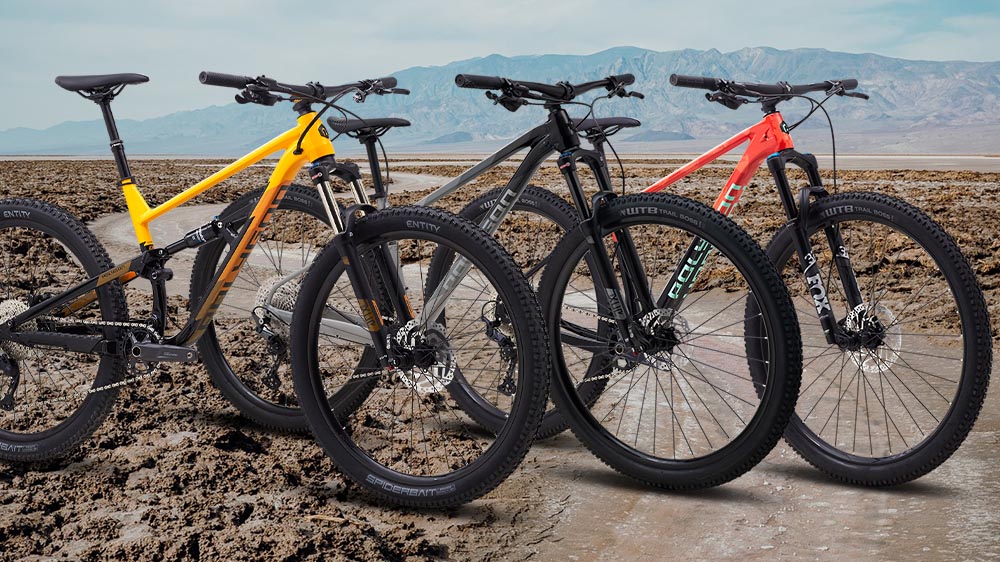
Choosing your first mountain bike can be overwhelming, especially with so many options available. Here are some top Polygon models that are perfect for beginners:
- Polygon Syncline C5 MTB – Built for Serious XC and Trail Riding
If you’re looking for a high-performance mountain bike frame that can handle both cross-country (XC) terrain and light trails, the Polygon Syncline C5 is a top-tier choice. Engineered with advanced technology and premium materials, it strikes the perfect balance between strength, lightweight construction, and ride comfort.
- Polygon Siskiu D6 MTB – Comfortable for Mixed Terrain
The Siskiu D6 is a dual suspension bike that’s ideal for beginners exploring mixed terrains, from light dirt trails to technical singletrack. It offers a balanced ride with front and rear suspension for added comfort and stability.
- Polygon Xtrada 7 2020 MTB – A Hardtail All-Rounder for Every Terrain
One of Polygon’s most popular hardtail models, the Xtrada 7 2020, is highly recommended for beginners or riders looking to upgrade their biking experience. With its lightweight aluminum ALX frame and suspension fork, the Xtrada 7 offers a good balance of performance for XC trails and light off-road conditions.
Read also:
- Road Bike vs MTB: Which One is Better?
- Choose Your Trail Companion: Mullet vs. Full 29” – Which Setup is Right for You?
Conclusion: Choose the Mountain Bike Frame That Fits Your Needs
Choosing the right mountain bike frame is a critical first step toward building an optimal riding experience. From types like hardtail, full suspension, and rigid to materials like aluminum, carbon, and steel, each option has distinct advantages suited to different riding styles and terrains.
Want to learn more about the world of mountain biking and tips for choosing other bike components? Check out more informative articles from us here and get the knowledge that will help you become a more confident rider!
Discover our latest activity on social media


